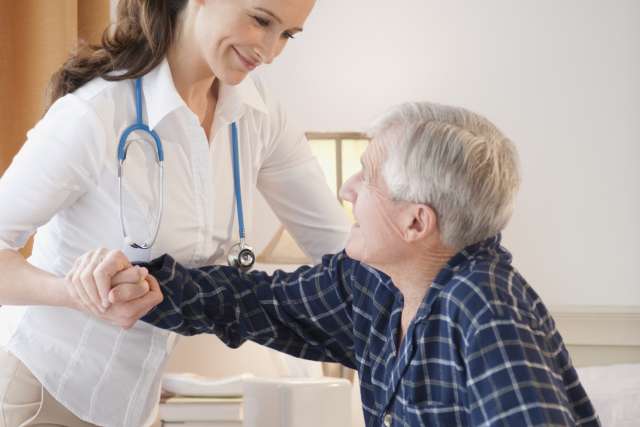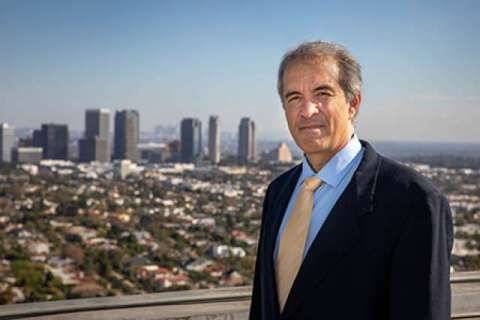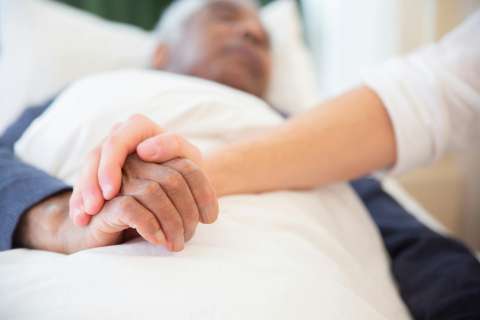A new use for an old procedure — vagus nerve stimulation — is a game changer for chronic stroke patients with stroke-related upper extremity weakness. Even years after the damaging event, patients thought to be at a plateau in their recovery can gain significant benefits in arm strength.
Vagus nerve stimulation was approved by the U.S. Food and Drug Administration in 2021 for use in stroke victims at least six months out from the stroke, to encourage improved arm motor function.
“It’s a very safe operation,” says Geoffrey Colby, MD, PhD, director of cerebrovascular neurosurgery at UCLA. “We’ve been doing vagus nerve stimulation for treatment of seizure disorders for many years. We know how to do it. Now we’ve found a new way this treatment can help the body.
“It doesn’t work specifically in the arm. Instead, it interacts with the brain and facilitates neurotransmitter release, which then affects body parts, providing significant benefit to patients.”
The procedure
The two-hour surgery, done on an outpatient basis, involves placement of “an electrode around the vagus nerve through a small incision in the neck,” explains UCLA neurosurgeon Ausaf Bari, MD, PhD, who performs the procedure at UCLA.
“Then it is connected to a battery, a ‘pulse generator,’ surgically placed below the collarbone. It’s entirely under the skin, a full body implant, like a heart pacemaker.”
The device and battery remain in patients for life.
Once implanted, the stimulator is turned on during rehab sessions to provide paired stimulation therapy.
“Rehab specialists use wireless technology to turn it on and off. Patients, too, can turn it on for home rehab. They receive a special magnet which, when placed over their chests, turns the stimulator on for 30 minutes,” says Dr. Bari.
The outcomes
Results have been impressive.
“Studies show a doubling in the improvement in upper extremity function when the stimulator is paired with rehab therapy, compared to rehab therapy alone,” says Dr. Bari. “While its exact mechanism of action is not known, we believe it releases neurotransmitters, the body’s natural chemicals that nerves use to communicate.
“We think when a neurotransmitter, such as norepinephrine, is released in the brain near the area of the stroke, it helps neurons to function better.”
Although it was once thought most recovery happened in the first six months following a stroke, this procedure and resulting paired stimulation therapy have challenged that assumption.
“There have been patients 10, 15, 20 years after a stroke who are seeing benefit,” says Dr. Colby.
In fact, as of yet, there is no known “end date” for potential motor function improvement. Because of this outlook, researchers are hopeful of finding other indications, possibly in lower extremity weakness following stroke, for which vagus nerve stimulation may be approved in the future.
Collaboration and awareness
The use of vagus nerve stimulation for stroke patients has opened the door to more collaborations at UCLA.
“A lot of functional neurosurgery involves movement disorders, traditionally tremors and Parkinson’s diseases, but this is a new area, creating a new interaction between stroke neurologists, rehab physicians and functional neurologists,” says Dr. Bari. “There is a large population of people with chronic stroke, but not a lot of effective therapies. It’s exciting to offer something to help patients who are without other therapy options available to them.”
But Dr. Colby stresses collaboration and education among people who care for stroke patients — from stroke neurologists to neurosurgeons, radiologists, rehab specialists and primary care physicians — are necessary to ensure awareness of the benefits and adoption of this option.
“People need to be educated. A person who had a stroke 10 years ago might not be seeing their stroke neurologist anymore, but they might be seeing their primary care provider for blood pressure and glucose issues,” he says. “It’s important for that patient to be made aware as well. The more eyes and ears we can get on it, the better.”
“As with any new technology, the challenge now is to make anyone working with stroke victims aware of this procedure,” adds Dr. Bari, who has spoken with groups of stroke neurologists. Both doctors are reaching out to rehab centers in Southern California and presenting on a national level.
“Neurologists and rehab physicians have many patients many years out from their stroke who have plateaued in terms of recovery from traditional rehab. They need to revisit this patient population and see if this therapy is appropriate for them. If so, they should consider referring those patients to us because the procedure is safe, and risks are low compared to its potential benefits. It’s something that should be seriously considered,” Dr. Bari says.
“[UCLA has] a lot of experience treating stroke. Our functional neurosurgery group is one of the best in the world with a very strong track record of treating patients and performing brain and nerve implants. We deliver cutting-edge therapies in a very safe, ethical and humane manner. Patients are in good hands.”





